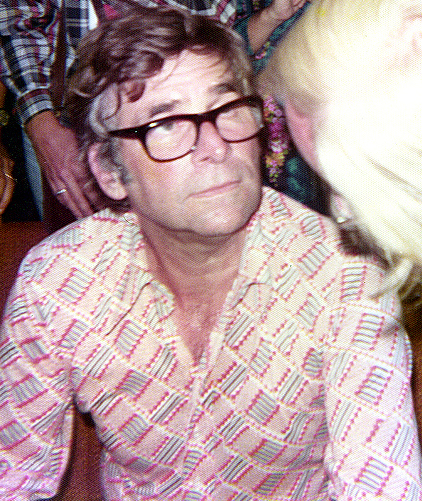
FROM WIKIPEDIA COMMONS
CONCEPTION AND SETTING
As early as 1964, Gene Roddenberry drafted a proposal for the science fiction series that would become Star Trek. Although he publicly marketed it as a Western in outer space—a so-called “Wagon Train to the Stars”—he privately told friends that he was modeling it on Jonathan Swift‘s Gulliver’s Travels, intending each episode to act on two levels: as a suspenseful adventure story and as a morality tale.
Most Star Trek stories depict the adventures of humans and aliens who serve in Starfleet, the space-borne humanitarian and peacekeeping armada of the United Federation of Planets. The protagonists have altruistic values, and must apply these ideals to difficult dilemmas.
Many of the conflicts and political dimensions of Star Trek are allegories of contemporary cultural realities. The Original Series addressed issues of the 1960s, just as later spin-offs have tackled issues of their respective decades. Issues depicted in the various series include war and peace, the value of personal loyalty, authoritarianism, imperialism, class warfare, economics, racism, religion, human rights, sexism, feminism, and the role of technology. : 57 Roddenberry stated: “[By creating] a new world with new rules, I could make statements about sex, religion, Vietnam, politics, and intercontinental missiles. Indeed, we did make them on Star Trek: we were sending messages and fortunately they all got by the network.” : 79 “If you talked about purple people on a far off planet, they (the television network) never really caught on. They were more concerned about cleavage. They actually would send a censor down to the set to measure a woman’s cleavage to make sure too much of her breast wasn’t showing”
Roddenberry intended the show to have a progressive political agenda reflective of the emerging counter-culture of the youth movement, though he was not fully forthcoming to the networks about this. He wanted Star Trek to show what humanity might develop into, if it would learn from the lessons of the past, most specifically by ending violence. An extreme example is the alien species known as the Vulcans, who had a violent past but learned to control their emotions. Roddenberry also gave Star Trek an anti-war message and depicted the United Federation of Planets as an ideal, optimistic version of the United Nations. His efforts were opposed by the network because of concerns over marketability, e.g., they opposed Roddenberry’s insistence that Enterprise have a racially diverse crew.

TODAY’S ALMANAC
Question of the Day
When were horses first domesticated?
Reportedly, they were tamed for transportation purposes in 2700 B.C. by people living in the area now known as Ukraine.
Advice of the Day
Girls who tuck a daisy under their pillows at night will dream of a true love.
Home Hint of the Day
Clean a leather tabletop by sponging on a solution of equal parts lemon juice and warm water. Then wipe the tabletop dry.
Word of the Day
Cubit
18 inches; derived from distance between elbow and tip of middle finger.
Puzzle of the Day
The Palmetto State.(Name the U.S. state!)
South Carolina
Born
- King Richard I of England (the Lion-Hearted) – 1157
- Antonin Dvorak (composer) – 1841
- Siegfried Sassoon (poet) – 1886
- Euell Gibbons (author) – 1911
- Sid Caesar (comedian & actor) – 1922
- Peter Sellers (actor) – 1925
- Patsy Cline (country music singer) – 1932
- Martin Freeman (actor) – 1971
- Henry Thomas (actor) – 1971
- David Arquette (actor) – 1971
- Pink (singer) – 1979
- Jonathan Taylor Thomas (actor) – 1981
Died
- Ann Lee (Shaker leader) – 1784
- Richard Strauss (composer) – 1949
- Dorothy Dandridge (actress) – 1965
- Roy Wilkins (civil rights leader) – 1981
- Rich Cronin (singer) – 2010
Events
- Michelangelo’s David statue was unveiled in Florence, Italy– 1504
- The first permanent settlement in what is now the United States was established at St. Augustine, Florida, by Don Pedro Menendez de Aviles– 1565
- Don Pedro Menéndez de Avilés founded what became St. Augustine, Florida– 1565
- The steamer Lady Elgin collided with the schooner Augusta on Lake Michigan– 1860
- The eastern and western lines of the Northern Pacific Railway were joined in Gold Creek, Montana– 1883
- Francis Bellamy’s Pledge of Allegiance first published, in The Youth’s Companion– 1892
- Margaret Gorman of Washington, D.C., became the first Miss America– 1921
- Cruise ship S.S. Morro Castle burned near Asbury Park, New Jersey– 1934
- Percy Saltzman became the first meteorologist to appear on Canadian television. Known for his entertaining presentations, Percy wrote vigorously on a chalkboard map while reporting on air and ended each broadcast by tossing and catching his chalk.– 1952
- Original Star Trek series debuted on television– 1966
- John F. Kennedy Center for the Performing Arts made its public debut, Washington, D.C.– 1971
- Stunt motorcyclist Evel Knievel made a failed attempt to jump the Snake River canyon in Idaho. He was propelled by a red, white and blue rocket-powered motorcycle, designed by rocket scientist Robert Truax.– 1974
- The Genesis return capsule, which had collected solar wind atoms in fragile disks, crashed in the desert after its parachutes failed to deploy– 2004
- A rare black rhino was born in Pittsburgh Zoo, Pennsylvania– 2012
Weather
- The deadliest hurricane in U.S. history, with a 15-foot storm surge, inundated the city of Galveston, Texas, killing an estimated 8,000 people– 1900
- A hurricane hit Key West and later struck Texas: 284 dead and $20 million in damages– 1919
- Roanoke, Virginia, reported a low temperature of 42 degrees F– 1988
COURTESY www.almanac.com
